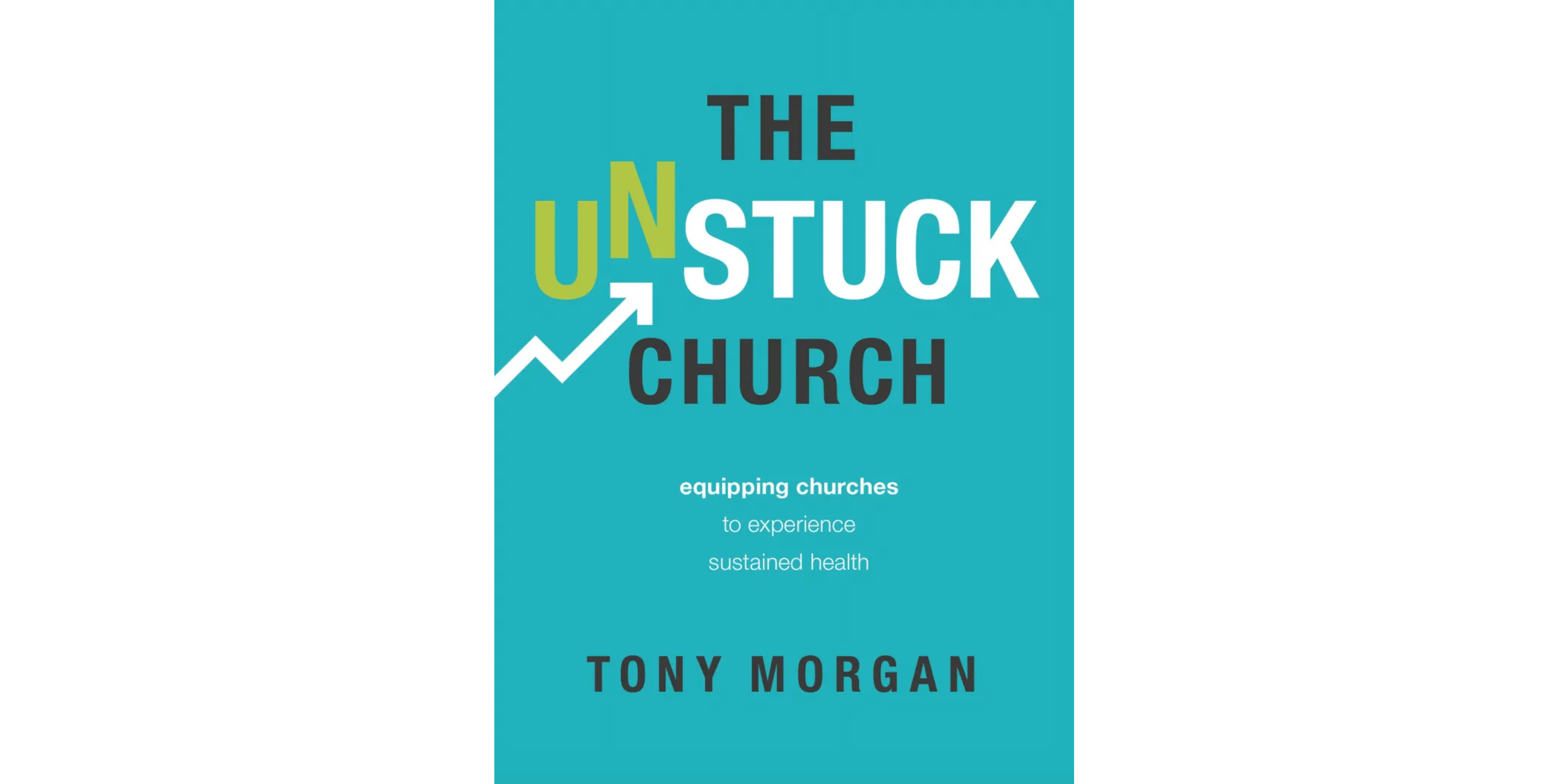By Tony Morgan
Nashville, TN: Thomas Nelson (2017)
Hardcover, 225 pages
Reviewed by JASON WORF
Tony Morgan has laid out his strategies for relating to a church that is “stuck” in Maintenance or Decline. His valuable experience in coaching churches through transition shows in the rich and practical stories that pepper the entire book. Morgan’s premise that all churches are at some stage of a life cycle and that, although there is a tendency to move towards Maintenance and Decline, any church can move toward and return to growth. The Unstuck Church takes this premise and develops it through the Launch, Momentum Growth, Strategic Growth, Sustained Health, Maintenance, Preservation, and Life Support stages of a church’s life cycle. Each chapter follows a predictable pattern of describing the context of one of the stages of a church’s life cycle, describing characteristics of churches in that stage, and outlining strategies to leverage the benefits of that stage or to coordinate a concerted effort back towards sustained health and strategic growth.
Morgan proves his skill at strategy while underscoring the need to have a team-based transformation approach. While one leader might be a great strategist, that doesn’t mean they’re a good visionary leader. A broad skill set comes from a team, not an individual. It’s frank and self-effacing advice like this that sets The Unstuck Church apart from other church growth volumes. The real value of this book is as a manual for conversations with your leadership team. It’s the kind of book that you can take to an elder’s meeting, read a section of, and then talk it through. The way the chapters are laid out with such consistency and predictability in content will help a team take bite-size portions of the book and find valuable launching points for conversations and action steps.
Morgan takes a strong stand on the side of vision, strategy, and systems while recognizing the need for reliance on God’s power and leadership. His way of thinking about this is nicely summed up in the concluion of the book:
When you reach the banks of the Jordan River, take a few steps into the river and stop there. (Josh. 3:7—8) We know the rest of the story. Though the river was overflowing, the priests took that first step into the water and God moved. The raging waters stopped flowing and the riverbed became dry. The Israelites crossed on dry land. God’s plan was for Joshua and the Israelites to take the first step into the river. Once they put their faith in action and took that next step, God moved (p. 195-196).
His foundation is clearly reliance on God’s leading, but he gets intensely practical as he talks about vision, strategy, and systems. To Morgan, vision is not a brief mission statement, but rather a clear description of what the future should look like. Strategy is the mechanism whereby we will reach that hoped-for future. Systems, on the other hand, are the day-to-day, organizational steps that make the strategy possible.
While Morgan flirts with promoting his business as a church growth consultant with the Unstuck Group, it is tasteful and appropriately connected to stories of the various churches and leadership teams he has helped. I didn’t get the feeling that Morgan was self-promoting, but rather that he uses his experience and skill to help you develop self-evaluative mechanisms for moving forward or back to health and growth. The book is written from the context of the congregationalist church and requires that the reader apply the principles to whatever system of governance their church employs.
I wholeheartedly recommend The Unstuck Church to any pastor or church leadership team who wants to understand their current stage in the life cycle of a church and wants to move their church towards growth.
Jason Worf has served as Director for Literature Ministries and Outreach Leadership Training at the North Pacific Union conference of Seventh-day Adventists and is currently an associate pastor at the Village Church in College Place, Washington, USA.

